
Infrastructure consulting service company AECOM (NYSE: ACM) fell short of the markets revenue expectations in Q3 CY2025 as sales only rose 1.6% year on year to $4.18 billion. Its non-GAAP profit of $1.36 per share was 1.7% above analysts’ consensus estimates.
Is now the time to buy AECOM? Find out by accessing our full research report, it’s free for active Edge members.
AECOM (ACM) Q3 CY2025 Highlights:
- The company will be holding its Analyst Day today, November 18, 2025
- Revenue: $4.18 billion vs analyst estimates of $4.32 billion (1.6% year-on-year growth, 3.3% miss)
- Adjusted EPS: $1.36 vs analyst estimates of $1.34 (1.7% beat)
- Adjusted EBITDA: $328.7 million vs analyst estimates of $324.9 million (7.9% margin, 1.2% beat)
- Adjusted EPS guidance for the upcoming financial year 2026 is $5.75 at the midpoint, in line with analyst estimates
- EBITDA guidance for the upcoming financial year 2026 is $1.29 billion at the midpoint, below analyst estimates of $1.29 billion
- Operating Margin: 5.7%, in line with the same quarter last year
- Free Cash Flow Margin: 3.2%, down from 6.7% in the same quarter last year
- Backlog: $24.83 billion at quarter end, up 4.1% year on year
- Market Capitalization: $17.47 billion
“We exited fiscal 2025 with numerous financial and strategic accomplishments including a record backlog and pipeline, which underpins our confidence in fiscal 2026 and beyond,” said Troy Rudd, AECOM’s chairman and chief executive officer.
Company Overview
Founded in 1990 when a group of engineers from five companies decided to merge, AECOM (NYSE: ACM) provides various infrastructure consulting services.
Revenue Growth
A company’s long-term sales performance can indicate its overall quality. Even a bad business can shine for one or two quarters, but a top-tier one grows for years. Unfortunately, AECOM’s 4% annualized revenue growth over the last five years was sluggish. This was below our standard for the industrials sector and is a tough starting point for our analysis.
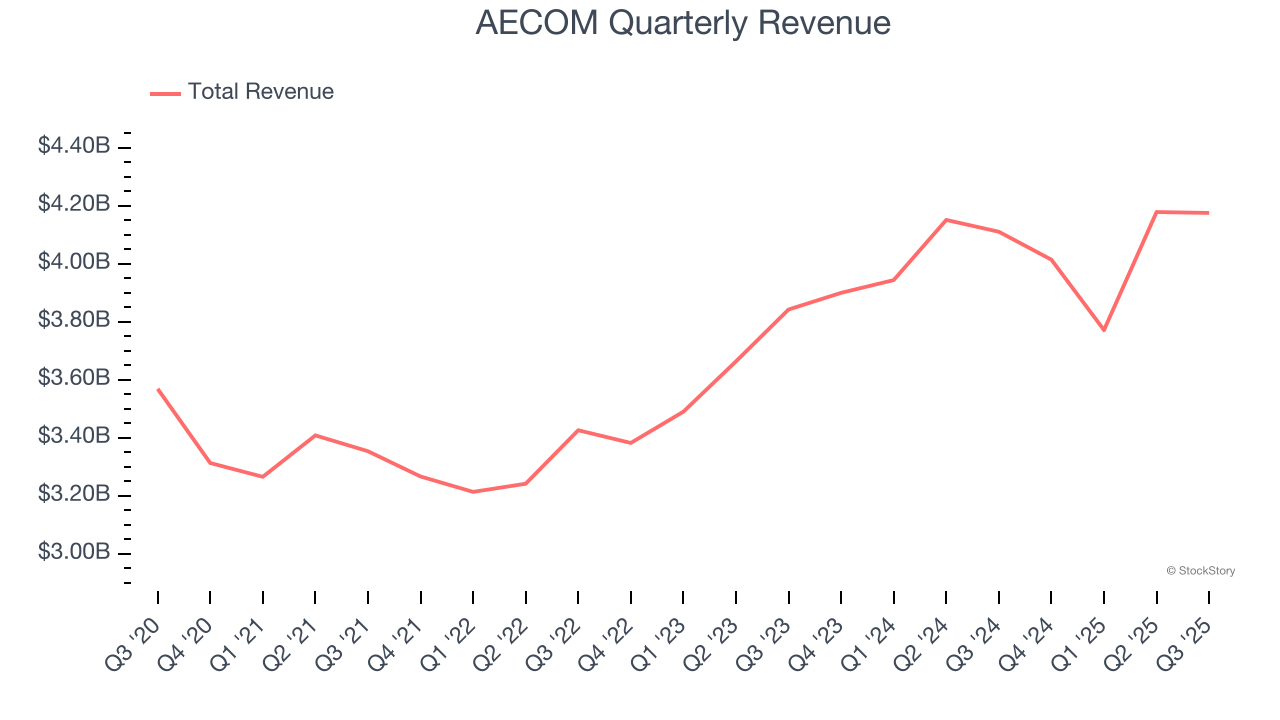
We at StockStory place the most emphasis on long-term growth, but within industrials, a half-decade historical view may miss cycles, industry trends, or a company capitalizing on catalysts such as a new contract win or a successful product line. AECOM’s annualized revenue growth of 5.9% over the last two years is above its five-year trend, but we were still disappointed by the results. 
We can dig further into the company’s revenue dynamics by analyzing its backlog, or the value of its outstanding orders that have not yet been executed or delivered. AECOM’s backlog reached $24.83 billion in the latest quarter and averaged 2.7% year-on-year declines over the last two years. Because this number is lower than its revenue growth, we can see the company hasn’t secured enough new orders to maintain its growth rate in the future. 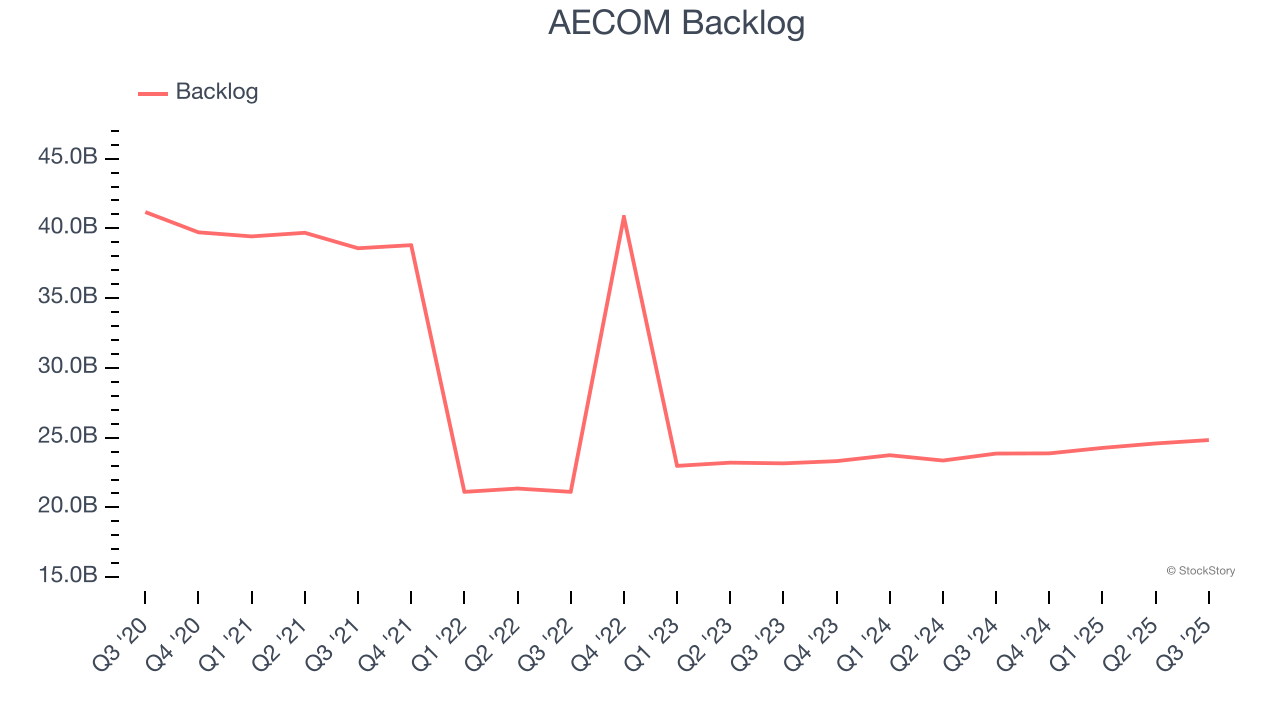
This quarter, AECOM’s revenue grew by 1.6% year on year to $4.18 billion, falling short of Wall Street’s estimates.
Looking ahead, sell-side analysts expect revenue to grow 6.4% over the next 12 months, similar to its two-year rate. This projection doesn't excite us and implies its newer products and services will not catalyze better top-line performance yet.
Microsoft, Alphabet, Coca-Cola, Monster Beverage—all began as under-the-radar growth stories riding a massive trend. We’ve identified the next one: a profitable AI semiconductor play Wall Street is still overlooking. Go here for access to our full report.
Operating Margin
Operating margin is an important measure of profitability as it shows the portion of revenue left after accounting for all core expenses – everything from the cost of goods sold to advertising and wages. It’s also useful for comparing profitability across companies with different levels of debt and tax rates because it excludes interest and taxes.
AECOM was profitable over the last five years but held back by its large cost base. Its average operating margin of 4.7% was weak for an industrials business.
On the plus side, AECOM’s operating margin rose by 1.6 percentage points over the last five years, as its sales growth gave it operating leverage.
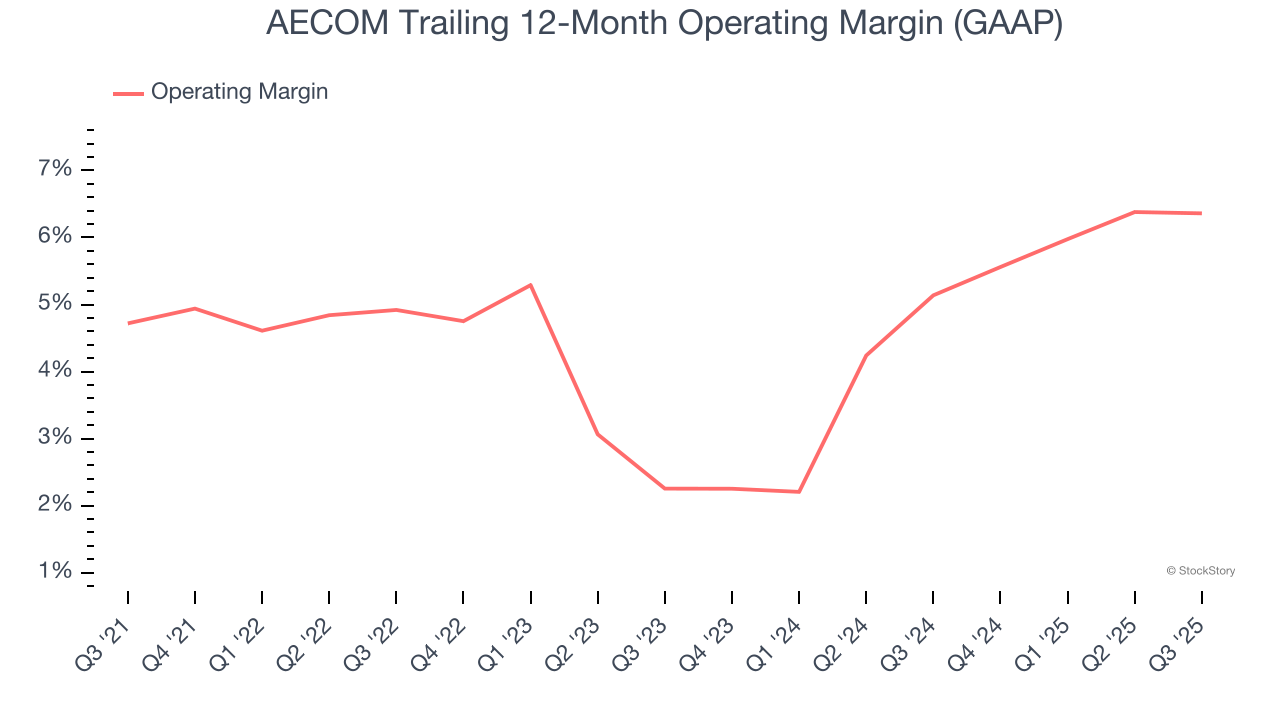
This quarter, AECOM generated an operating margin profit margin of 5.7%, in line with the same quarter last year. This indicates the company’s overall cost structure has been relatively stable.
Earnings Per Share
We track the long-term change in earnings per share (EPS) for the same reason as long-term revenue growth. Compared to revenue, however, EPS highlights whether a company’s growth is profitable.
AECOM’s EPS grew at an astounding 19.5% compounded annual growth rate over the last five years, higher than its 4% annualized revenue growth. This tells us the company became more profitable on a per-share basis as it expanded.
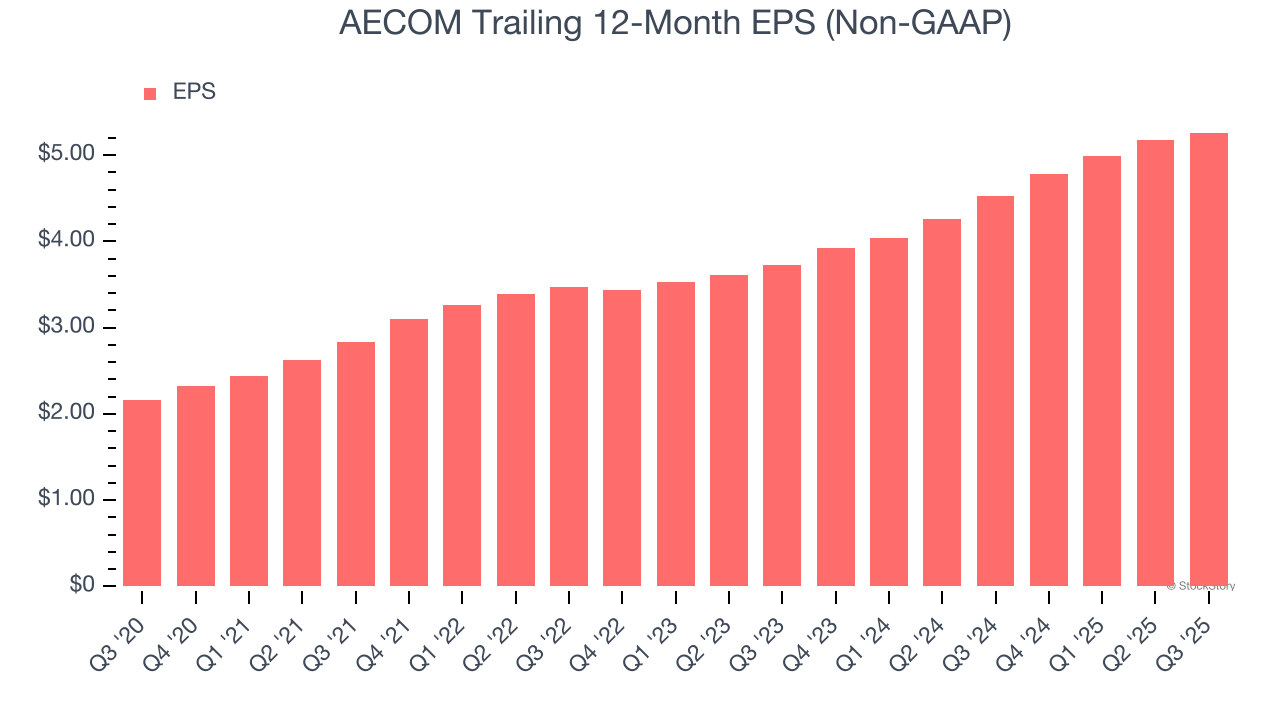
Diving into the nuances of AECOM’s earnings can give us a better understanding of its performance. As we mentioned earlier, AECOM’s operating margin was flat this quarter but expanded by 1.6 percentage points over the last five years. On top of that, its share count shrank by 16.6%. These are positive signs for shareholders because improving profitability and share buybacks turbocharge EPS growth relative to revenue growth. 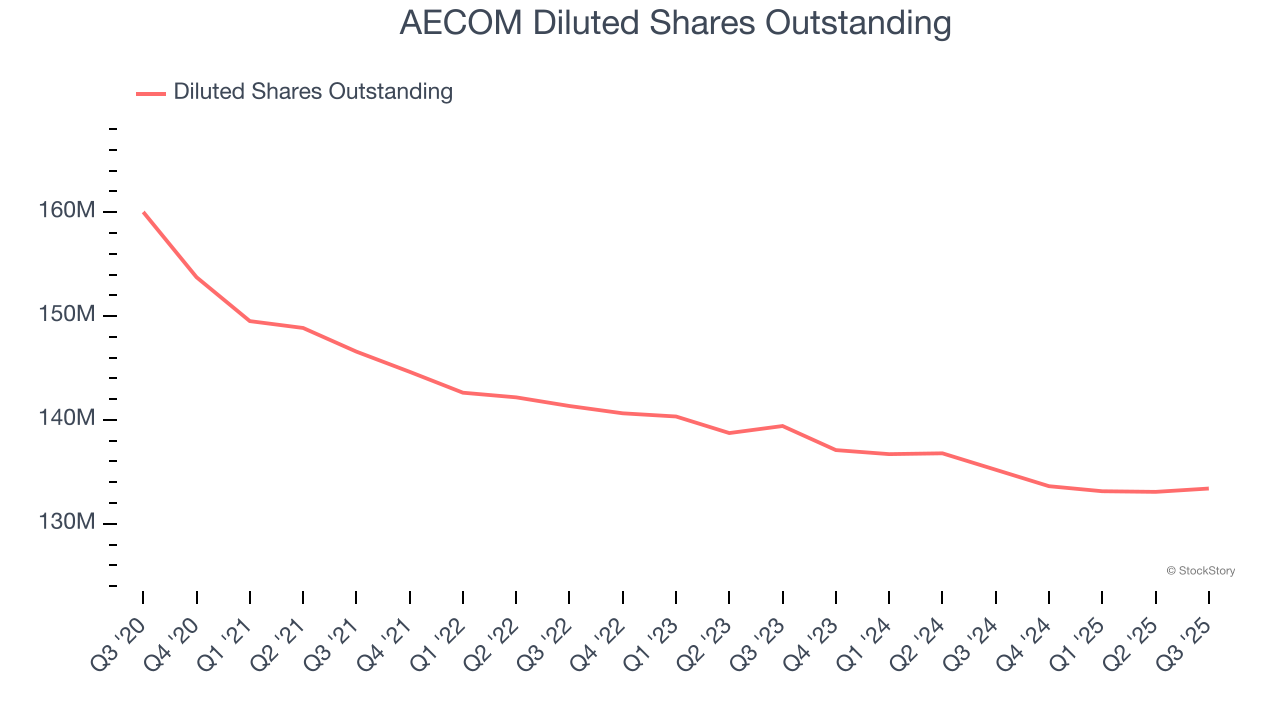
Like with revenue, we analyze EPS over a shorter period to see if we are missing a change in the business.
For AECOM, its two-year annual EPS growth of 18.8% is similar to its five-year trend, implying strong and stable earnings power.
In Q3, AECOM reported adjusted EPS of $1.36, up from $1.27 in the same quarter last year. This print beat analysts’ estimates by 1.7%. Over the next 12 months, Wall Street expects AECOM’s full-year EPS of $5.26 to grow 7.8%.
Key Takeaways from AECOM’s Q3 Results
It was good to see AECOM narrowly top analysts’ EBITDA expectations this quarter. On the other hand, its revenue missed and its full-year EBITDA guidance fell slightly short of Wall Street’s estimates. Overall, this was a weaker quarter. Investors will hear much more later today during the company's Analyst Day. The stock remained flat at $132.43 immediately after reporting.
So do we think AECOM is an attractive buy at the current price? The latest quarter does matter, but not nearly as much as longer-term fundamentals and valuation, when deciding if the stock is a buy. We cover that in our actionable full research report which you can read here, it’s free for active Edge members.





